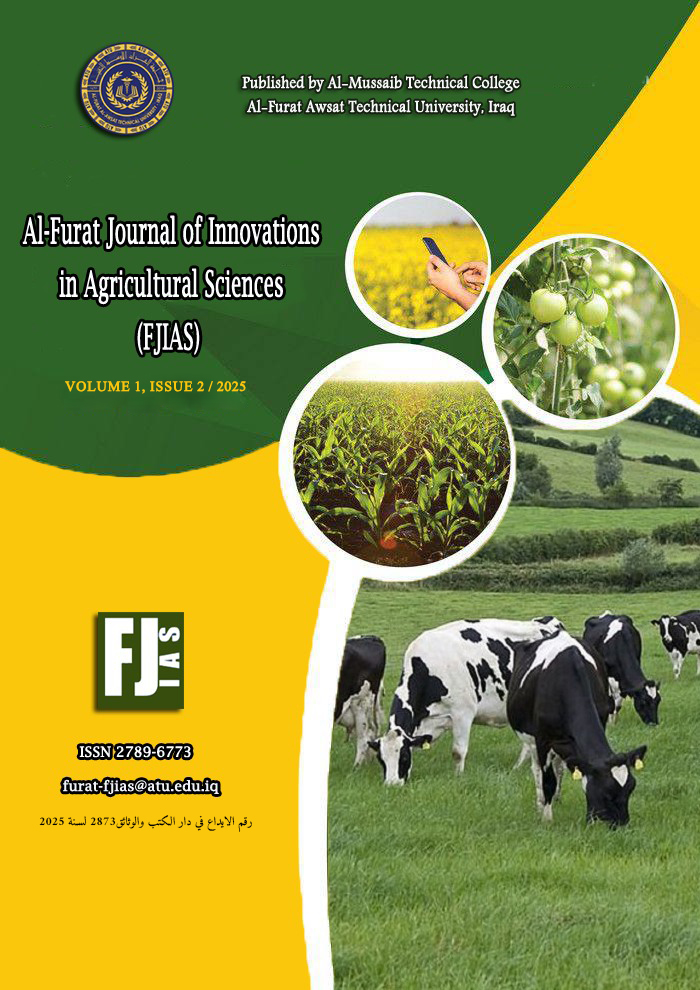The Influence of Using Various Feed Restriction Methods with /without Dietary Fenugreek and Anise on Carcass Yield and Morphological Traits of Functional Organs for Broiler Chickens Ross 308
Keywords:
carcass cuts; feed restriction regimes; sand ; fenugreek; anise.Abstract
This experiment was carried to investigate the influence of using 3 different feed restriction regimes with or without anise and fenugreek supplemented in the diet on carcass yield, carcass proportions, and morphological traits of visceral organs of broiler chickens on 21st and 42nd days. It has been used 400 unsexed chicks - one-day old which distributed randomly into 10 groups (40 chicks/ group ( assigned into 2 replications (20 chicks/ replication). Chicks were reared for 6 weeks and divided from the 2nd week into the following groups:1st group (G1): Ad libitum feeding (control), 2nd, 3rd and 4th groups (G2, G3, and G4): quantitative feed restriction (30%), 5th, 6th and 7th groups (G5, G6, and G7): temporal feed restriction (12 hours/day), 8th, 9th and 10th groups (G8, G9, and G10): diets dilution with sand (15%). 1% of fenugreek powder was added to G3, G6, and G9 diets, and 1% of anise powder was added to G4, G7, and G10 diets. The results showed a significant increase (p<0.05) in carcass yield for all feed restriction groups except for G5 which did not differ from G1. Low (p<0.05) abdominal fat content in all experimental groups compared with G1. High increases (p<0.05) in drumstick and back cuts were achieved by G9 and G8. Also, G9 and G8 caused an augment in heart weight (%). At 21 days, it was noticed that there significant increase (p<0.05) in the total weight (%) and the total length of gut (%) for (G5, G8) and (G5, G6), respectively. At 42 days, there was no significant difference between experimental groups and G1 in total weight and length of gut (%). Stability in most of the visceral organs in the 21st day except for G9 which caused a high (p<0.05) heart weight (%). Increasing heights (p<0.05) in pancreas, adrenal glands, and lungs weights (%) were in favor of G10, (G3, G4, G5, G6, G8, G10), G5, and G9, respectively on the 42nd day. In conclusion, most of the feed restriction groups with dietary plant extracts or sand increased the carcass yield with a mild effect on carcass cuts. Also, each group has its own physiological mechanism to appear the changes or stability in morphological trait for each part visceral organs without any negative influence on bird livability and public health




